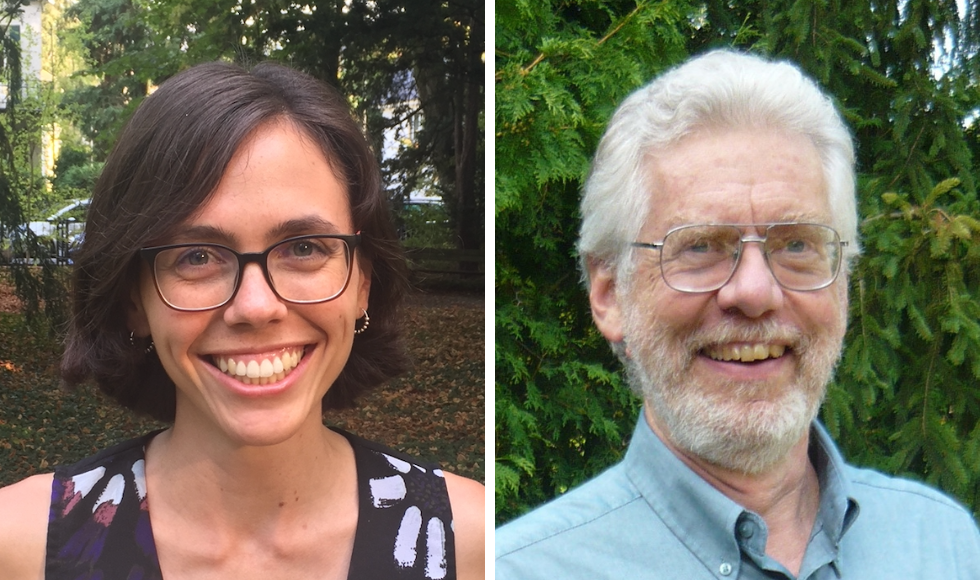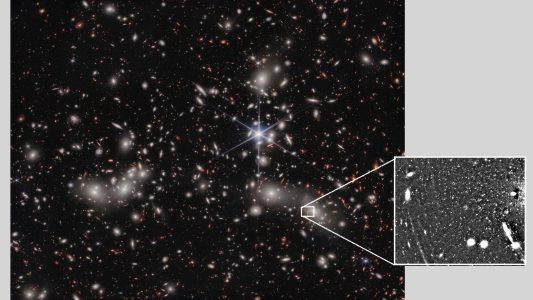McMaster astronomers look billions of years into the past to study Pandora’s Cluster

Marta Reina-Campos and William Harris
December 12, 2023
Two McMaster astronomers have used recent deep imaging data from the James Webb Space Telescope to look 3.5 billion years into the past to study a remote giant cluster of galaxies.
Marta Reina-Campos, a postdoctoral fellow and Canadian Institute for Theoretical Astrophysics National Fellow, and William Harris, an emeritus professor, collaborated on a paper that was published in Monthly Notices of the Royal Astronomical Society — one of the top four journals in astrophysics.
The galaxy cluster, called Pandora’s Cluster and often referred to by its catalog name of Abell 2744, contains thousands of galaxies of all sizes.
Reina-Campos and Harris focused their work specifically on the old, compact clusters of stars called globular clusters that are found in those galaxies.

Reina-Campos, a theoretician, builds advanced computer simulations of galaxies in which the evolution of their globular clusters can be followed from their very beginning to the present day.
Harris is an observational astronomer who works on measuring the real-world properties of globular clusters in large galaxies like those in Abell 2744.
“Up until now, we’ve been restricted to measuring the properties of these star clusters just in galaxies in the nearby universe,” says Harris.
“This is like trying to deduce a person’s history by only working from a present-day photo of them. What about all that came before? The James Webb Space Telescope has opened up a huge new range of space and time for exploration.”
Abell 2744 is so distant that the light we see today was emitted 3.5 billion years ago — about the time that life first originated on Earth.
“For the first time, we can see directly what the features of the star clusters were like that long ago,” says Reina-Campos. “This lets us fill in more of their past story and adds entirely new tests for what we predict from theory. It will also help us understand more about the histories of the galaxies themselves.”
The so-called “lookback time” for Abell 2744 corresponds to seeing things as they were a quarter of the way back to the Big Bang and the very beginning of the universe.
Reina-Campos and Harris view their work as the first stage in a new direction. “The images that JWST is producing are incredible — we’ve never seen anything like this before. It’s going to be one of the premier instruments in the entire history of science,” says Harris.


